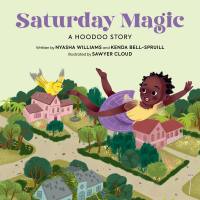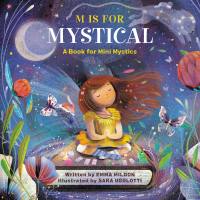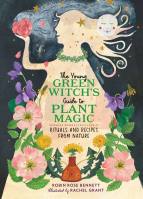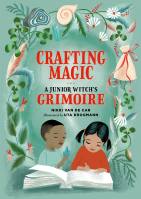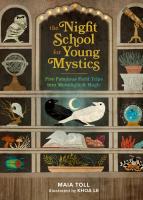Summer Magic from RP Kids
Summer is a magical time of bright days, fun snacks, and nature thriving all around! Explore this season with little ones and middle-graders with help from Running Press Kids. We’ve curated five activities including: a perfect summer recipe, a self-care ritual, a spell bag craft, a nighttime observation practice, and a creative writing exercise. All inspired by our new and forthcoming mystical titles for kids – let the sunshine be your guide!
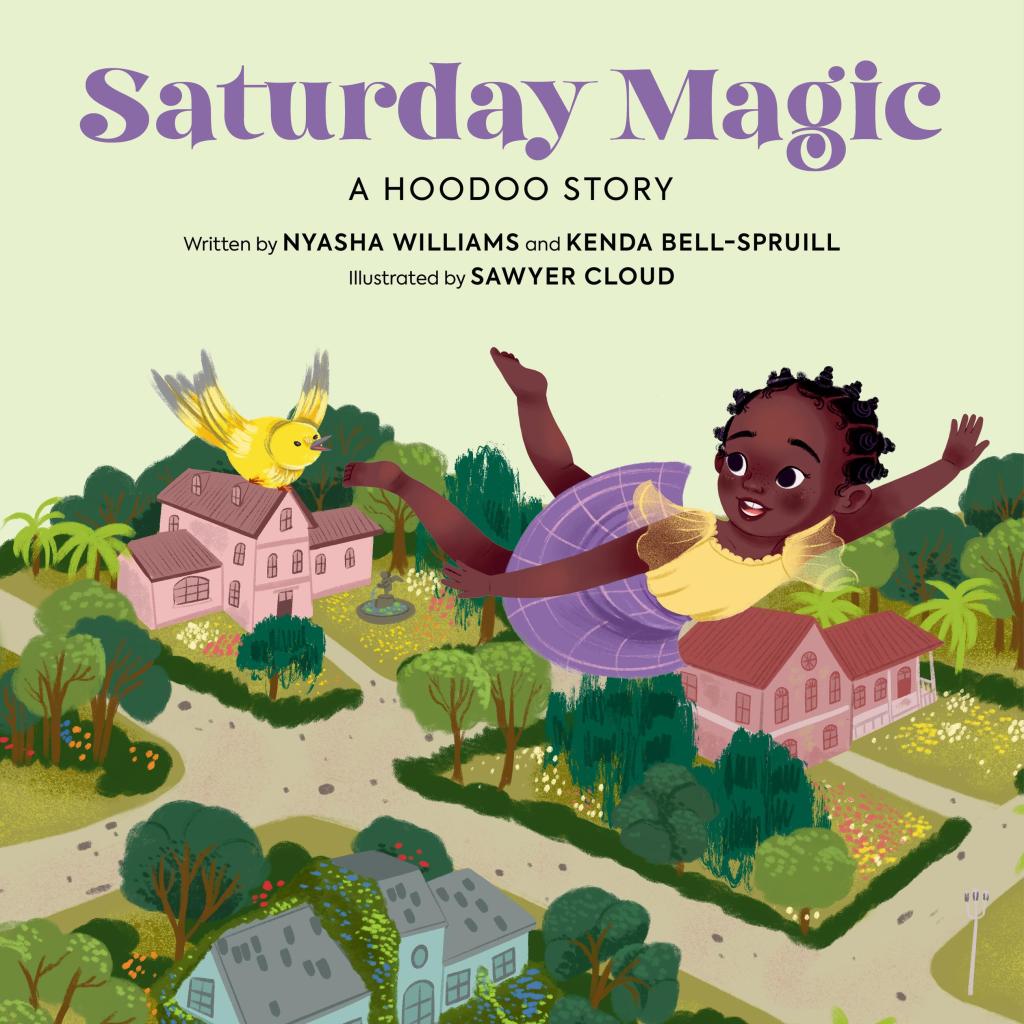
Grandma Rose’s Watermelon & Orange Salad
You will notice there are no strict measurements in this recipe from the picture book Saturday Magic: A Hoodoo Story by Nyasha Williams & Kenda Bell-Spruill, illustrated by Sawyer Cloud. The authors ask you to lean into the ingredients and amounts intuitively.
Ingredients
Cucumber
A watermelon (yellow or red)
A few oranges
Red onion (small)
Juice of half of a lime
Honey
Cinnamon
Mint
Directions
- Dice the cucumber into small cubes.
- Chop the watermelon.
- Peel and slice oranges into bite-size chunks.
- Thinly slice the onion.
- Mix the fruit and onion together in a large bowl.
- Squeeze half of the lime on top of the mixture.
- Swirl a little bit of honey on top.
- Toss with a big spoon.
- Sprinkle on cinnamon.
- Add the mint and toss again.
- Season to taste.
- Make it your own and enjoy!

Oatmeal Scrub for Glowing Skin
Oatstraw is one of the nine magical plants highlighted in The Young Green Witch’s Guide to Plant Magic: Rituals and Recipes from Nature by herbalist Robin Rose Bennett, illustrated by Rachel Grant. Let’s review Robin Rose’s introduction to this powerful plant, along with simple directions for creating your own oatmeal scrub:
Oatstraw
(Avena Sativa)
Inner Peace and Beauty Magic
Oatstraw is many herbalists’ go-to plant for stress relief, and it’s definitely one of mine. Oats are high in the minerals that nourish our nerves and help us adapt to the stresses of our lives. These same minerals also strengthen our musculoskeletal systems, which form the structure of our bodies—our muscles, bones, cartilage, joints, ligaments, sinews, and tendons. These systems are all intertwined, and our nerves run through almost every part of our bodies. Oats can help relieve pain in our joints and muscles, even as they provide relief for “pain” in our minds that may show up as anxiety or depression.
I love that oatstraw is both soothing and strengthening. Think of this plant as a relative who loves you and knows just what to say to help you calm down when you feel anxious or frazzled! I prefer to use the whole plant, meaning the stalks and the seeds/tops, because I want to get everything oatstraw has to give me. We get more of the nutritive minerals that help balance our blood sugar, improve our digestion, and strengthen our bones from the whole plant infusion. Whether we are drinking oats or bathing in them, we prepare our medicine with the dried plant.
Whether you grow your oats or find wild fields of it in which to forage, this is a supremely helpful and magical herb to get to know. It’s one of our most nourishing herbs and tastes great on its own, yet it mixes easily and deliciously into different tea blends. Oatstraw strengthens our bones and digestion, relieves pain, and helps clear our skin. Best of all, the more oatstraw we drink, the more resilient we become!
Oatmeal Scrub
Loosely grind rolled oats in an electric grinder or with a mortar and pestle. Store them in a glass jar in your bathroom. Put some in your hand or in a small bowl to combine with warm water for a gentle exfoliant to stimulate healthy skin on your face and body. When you do this a few times you’ll discover which texture you like best, smoother or flakier.
This recipe also combines beautifully with roses. Use about 1 tablespoon of dried roses to 1 cup of rolled oats.

Create a Friendship Spell Bag
In Crafting Magic: A Junior Witch’s Grimoire, Nikki Van De Car offers special rituals for working Friendship Magic. She writes, “Our friends can often be the most important people in our lives. They laugh with us, cry with us, support us, and teach us…. This spell can come in handy when you’ve moved to another town, another school, or if you just feel like there’s a gap somewhere—maybe you have an interest your other friends don’t share and it would be great to have someone to enjoy it with!” Here are the directions:
Start by taking a piece of paper and writing down the characteristics you’re looking for in this new friendship. Do you want someone who is imaginative? Someone who is into music? Someone who likes karate? Is this person going to be kind, outgoing, studious, hilarious? Write it all down, then fold your piece of paper up nice and small.
Create a spell bag by cutting a two- or three-inch square of cloth. Choose your cloth carefully—do you want something soft or sparkly? What color feels right? Follow your intuition here, as you think about the kind of friend you want to invite into your life.
Place the piece of paper on the cloth. If you want, you can add some rose quartz or malachite and sprinkle the cloth with a bit of rose or ginger essential oil. Bring the edges together and tie it up with a ribbon. Make sure it’s nice and tight.
For the next three nights, sleep with the bag beneath your pillow or next to your heart so that your unconscious mind can work its power.
You should know, though, that your new friend may show up in unexpected ways. You may find that you meet exactly the person you envisioned right after those three nights’ sleep, or it may take a while longer. You might even find that an old friend, someone you’ve known forever, is suddenly different, more exciting—as if they suddenly are all the things you were looking for when you worked your spell.

What Moon Do You See in the Sky?
M is for Mystical: A Book for Mini Mystics by Emma Mildon, illustrated by Sara Ugolotti, is an enchanting picture book introducing magical concepts from A to Z. Each concept is accompanied by an illustrated exercise. Let’s take a look at the letter L and its exercise.
L IS FOR LUNAR CYCLE.
Lunar cycles are when the moon goes through its eight main phases. It takes approximately 29.5 days to complete a cycle. Each stage of the moon affects us differently.
Fun Fact: The moon is the second brightest thing in the sky after the sun.
Exercise: What moon do you see in the sky?
The eight phases of the moon are illustrated above their meanings:
- New Moon: A time for new beginnings. (The moon is not visible in the night sky,)
- Waxing Crescent Moon: A time for hope and positivity. (The moon appears to be a left-facing crescent shape in the night sky.)
- First Quarter Moon: A time for action and decisions. (The moon appears to be half-full on the right side in the night sky.)
- Waxing Gibbous Moon: A time for reflection. (The moon appears to be mostly full on the right side in the night sky.)
- Full Moon: A time for letting go. (The moon appears to be full in the night sky.)
- Waning Gibbous Moon: A time for gratitude. (The moon appears to be mostly full on the left side in the night sky.)
- Last Quarter Moon: A time for forgiving and moving forward. (The moon appears to be half-full on the left side in the night sky.)
- Waning Crescent Moon: A time for stillness and peace. (The moon appears to be a right-facing crescent shape in the night sky.)

Write a Night Haiku
Learn how to discover your Night-self and explore the Night’s mysteries with The Night School for Young Mystics: Five Fabulous Field Trips into Moonlight and Magic by Maia Toll, illustrated by Khoa Le. After your first magical Night stroll, record your observations by writing a Night Haiku:
You may already know that a haiku is a type of short poem that originated in thirteenth-century Japan. Since haiku are only three lines long, they’re the milk and cookies of the poetry world (just a quick snack, not a whole meal). Haiku are often about nature, so an ode to the Night or the four elements is common for these types of poems.
Start by thinking of a few words you can use to describe the sensations you smelled, tasted, and heard in your Night Spot. Use this as an excuse to string your words together in unexpected ways in order to create new meanings. Words that would never sit side by side during the day are perfectly comfortable hanging out together at Night: sweet and grassy; cucumber and wood smoke; hoot and burp.
Remember, a haiku is three lines long. The lines don’t need to rhyme, but the number of syllables in each line does matter. You’ll need to count the syllables as follows:
✶ five for the first line
✶ seven for the second line
✶ five for the third line
Knowing this, a Night Haiku might look something like this:
Hush, green frog burping!
The hoot of a midnight owl
warns: find grass and hide!
Or:
The TV is on.
Night, through the open window,
Tastes of cucumbers.
Your turn, Firefly.
In your journal, write a haiku or two describing the Night or your Night Spot, as well as notes on your observations from your trip outside. Easy peasy.
Too easy? If you want a challenge, try to include things to represent all four elements—Earth, Air, Water, and Fire—in your haiku!
Dive Deeper
Explore nature’s magic with these new offerings from Running Press Kids!





